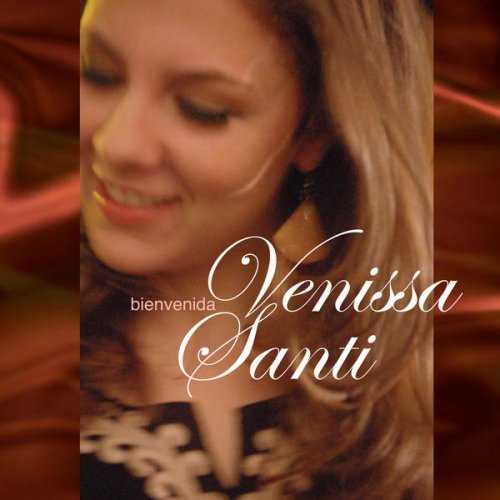Manuel Vilas & Ars Atlántica - Yaya Kuntur (2024)

Artist: Manuel Vilas, Ars Atlántica
Title: Yaya Kuntur
Year Of Release: 2024
Label: Lindoro
Genre: Classical
Quality: FLAC (tracks)
Total Time: 73:27 min
Total Size: 308 MB
WebSite: Album Preview
Tracklist:Title: Yaya Kuntur
Year Of Release: 2024
Label: Lindoro
Genre: Classical
Quality: FLAC (tracks)
Total Time: 73:27 min
Total Size: 308 MB
WebSite: Album Preview
01. Toro Velay
02. Exemplo a cuatro voces
03. Lamentación segunda del Jueves Santo
04. Hanaqpachap kusikuynin
05. Himno a María Magdalena "Pater superni luminis"
06. Himno Adventus Navitates "Creator alme siderum"
07. In festo Corporis Christie
08. Zarabande-Chinfonia
09. Dios te salve María
10. Sacris solemniis
11. Capac Eterno Dios (al modo del Sacris Solemniis)
12. Imapakmi, urpi (¿Para qué, paloma?) - Yaravi
13. Te Deum en quechua
14. Jesus Huahua
15. Himno a los Ángeles Custodios "Custodes hominum"
16. Kanan pakas puringayta (Esta noche me voy)
17. Exemplo en octavo tono
18. Ima sumakk yawar (Sangre de Jesús)
19. Verbum Supernum
20. Kcashua de Huánuco
21. Jesús Ruraccni (Letrillas al Santísimo)
Under the title YAYA KUNTUR (Father Condor, in Quechua), the harpist Manuel Vilas and the Ars Atlántica group have just published on the Lindoro label a disc focused especially on the study of the Catholic hymn in Quechua, of which they intend to offer a panoramic view through its history from its beginnings in the 16th century to the 20th century, offering examples such as Te Deum and the famous Hanaqpachap Kusikuynin, among others.
The Quechua language, the great protagonist of this recording, was one of the objectives of linguistic study and translation in Hispanic South America from the mid-16th to the mid-17th century. The Latin language is also important, which was present in Peru from the beginning of evangelization. The disc offers several examples of hymns in Latin, from a hymnal of the cathedral of La Plata (Sucre).
This look at ancient Peruvian music stems from Manuel Vilas's fascination –creator and director of the project– with the study of ancient sources: texts of very diverse nature (chronicles, catechisms, grammars, poems), images (paintings, sculptures, drawings, engravings) and, of course, scores.
An expert in Peruvian viceregal harp, Vilas uses for this album a harp made by Javier Reyes de León, who recreates the one represented in one of the frescoes of the church of the Apostle Santiago de Huachacalla (Bolivia), also studying for its recreation the harp found in the Convent of Santa Monica, in the city of Potosí.
Diego Blázquez and Magali Revollar contribute two different vocal worlds, with Blázquez representing the Creole or Spanish voice, while Revollar, a native of Ayacucho (one of the centers of the Catholic hymn in Quechua), embodies the Indian song.
The Quechua language, the great protagonist of this recording, was one of the objectives of linguistic study and translation in Hispanic South America from the mid-16th to the mid-17th century. The Latin language is also important, which was present in Peru from the beginning of evangelization. The disc offers several examples of hymns in Latin, from a hymnal of the cathedral of La Plata (Sucre).
This look at ancient Peruvian music stems from Manuel Vilas's fascination –creator and director of the project– with the study of ancient sources: texts of very diverse nature (chronicles, catechisms, grammars, poems), images (paintings, sculptures, drawings, engravings) and, of course, scores.
An expert in Peruvian viceregal harp, Vilas uses for this album a harp made by Javier Reyes de León, who recreates the one represented in one of the frescoes of the church of the Apostle Santiago de Huachacalla (Bolivia), also studying for its recreation the harp found in the Convent of Santa Monica, in the city of Potosí.
Diego Blázquez and Magali Revollar contribute two different vocal worlds, with Blázquez representing the Creole or Spanish voice, while Revollar, a native of Ayacucho (one of the centers of the Catholic hymn in Quechua), embodies the Indian song.





![Nana Vasconcelos - Saudades (1980/2025) [Hi-Res] Nana Vasconcelos - Saudades (1980/2025) [Hi-Res]](https://www.dibpic.com/uploads/posts/2025-12/1766056483_cover.jpg)
![Tim Kliphuis, Maya Fridman, Marc van Roon - Kosmos (2025) [Hi-Res] Tim Kliphuis, Maya Fridman, Marc van Roon - Kosmos (2025) [Hi-Res]](https://www.dibpic.com/uploads/posts/2025-12/1765893448_folder.jpg)

![The Baroque Jazz Ensemble - The Baroque Jazz Ensemble (feat. Ira Schulman) (2025) [Hi-Res] The Baroque Jazz Ensemble - The Baroque Jazz Ensemble (feat. Ira Schulman) (2025) [Hi-Res]](https://img.israbox.com/img/2025-12/19/yehoqbmzkuwk180c26lz85clx.jpg)